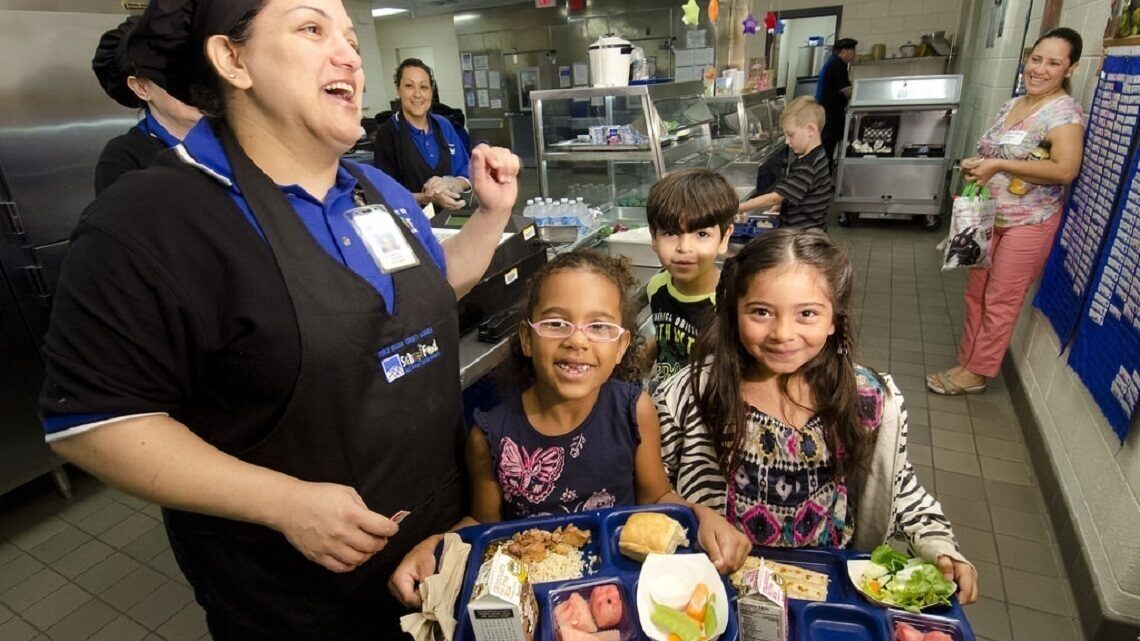Reduce Food Waste

Food production accounts for a quarter of global greenhouse gas emissions. These emissions are causing our climate to change. Food production is a major contributor to climate change but it can be reduced—about one-third of the world's food is never eaten! At schools in the United States, 530,000 tons of food are wasted each year. This food waste is also a social and economic issue. In the United States, 37.2 million people live in food insecure homes and this food waste totals $161 billion.
For schools and homes, waste reduction can start in the kitchen by only buying what you will use, adjusting serving sizes, donating extra food, and getting students involved. Action can then extend to composting. There will always be waste like banana and orange peels that can’t be consumed. Composting food rather than sending it to the landfill will result in less emissions and can be added to gardens to improve soil.
Connecting to Issue Investigation
Investigations looking into the impacts and causes of climate change or a school’s environmental impact can lead to solutions of reducing food waste and composting. Food waste can also connect to investigations into social issues like human health, nutrition, and food insecurity. Investigations can start with monitoring the current amount of food waste created then looking for areas of improvement.
For those working towards green school awards, this action can reduce a school’s environmental impact and cost and, depending on the specific action taken, can improve the health and wellness of the school community.
Facilitating Student Action
Students should continue to have opportunities to share ideas and opinions throughout the process of identifying, planning, and implementing action. Listed here are just a few ways students can stay engaged while working on this solution—but there are many more! The complexity of each activity/task can be adjusted for each grade level.
Create - students can create a composting system at their school with permission from school administration but they should have a multi-year maintenance plan ready so it continues after them. They can also look into creating “share tables” in their cafeteria or other ways to donate unused food.
Monitor - students of any age can conduct a food waste audit of the school. Students can use the collected data to inform their next steps.
Educate - students can research the environmental benefits and cost saving opportunities of reducing food waste at the school and share their findings with the school administration, cafeteria staff, and the broader school community.
Advocate - students can advocate for changes in how and what is served in the school cafeteria based on their data. Students can advocate for their involvement in menu planning so food that is most often wasted is removed and replaced with healthy food preferred by students.
Share and Celebrate - students can share their work with the school community by giving presentations, creating displays, or writing and delivering morning announcements. Students can also write articles, press releases or invite reporters from the school paper and the local newspaper.
Reduce Food Waste Resources
The Environmental Protection Agency’s Guide to Conducting Student Food Waste Audits offers a step-by-step guide on how to organize and implement an audit at school and collect data.
The Food Waste Warrior site from the World Wildlife Fund offers a wealth of information on how to cut food waste at school. Explore the site for lessons and activities for K-12, toolkits on how to conduct audits and reduce food waste, and opportunities to apply for grants.
The School Composting guide walks you through the process of starting a composting program by getting support and funding through building the compost structure and managing the compost. Check out the Designs for Composting Systems from Cornell Waste Management Institute to review a variety of options.
